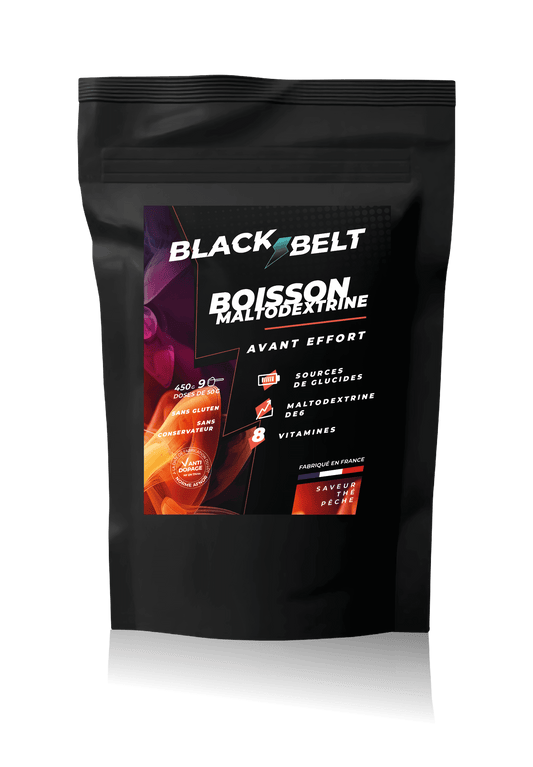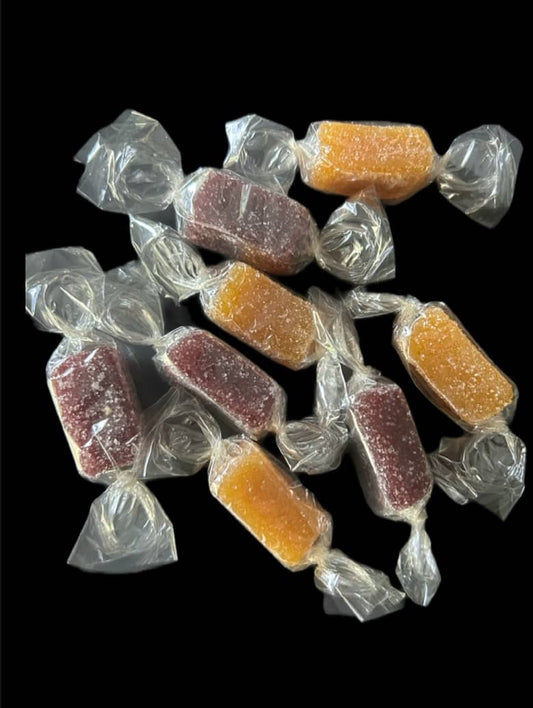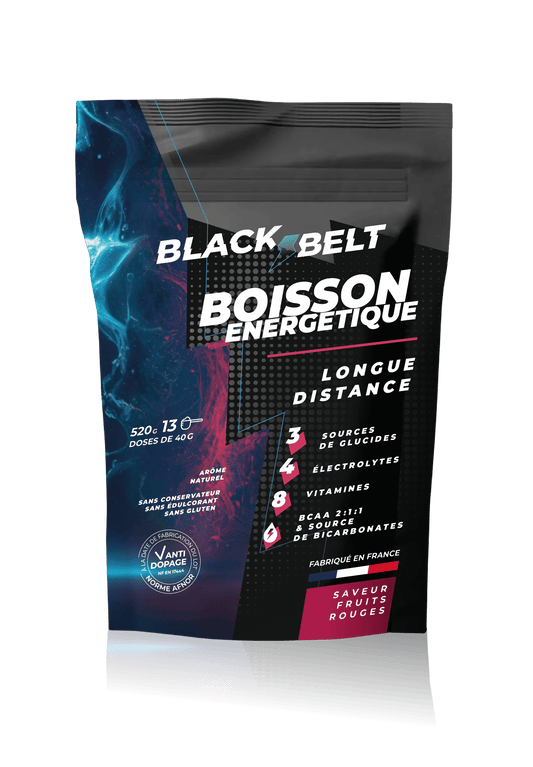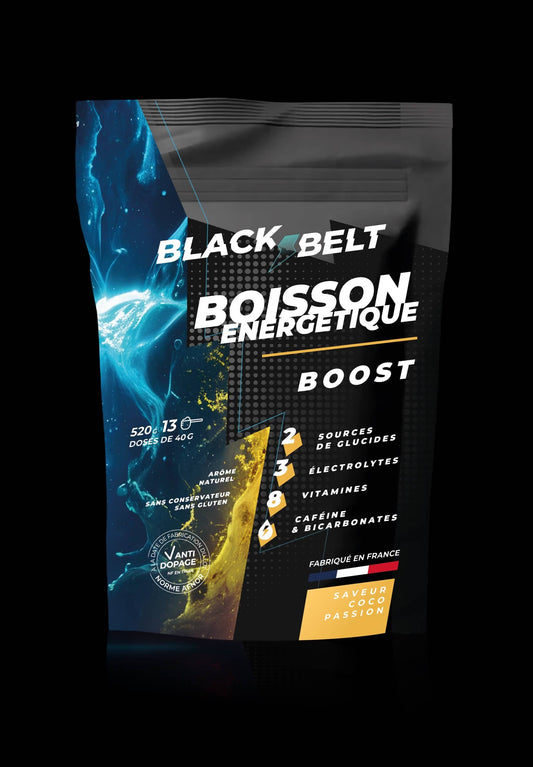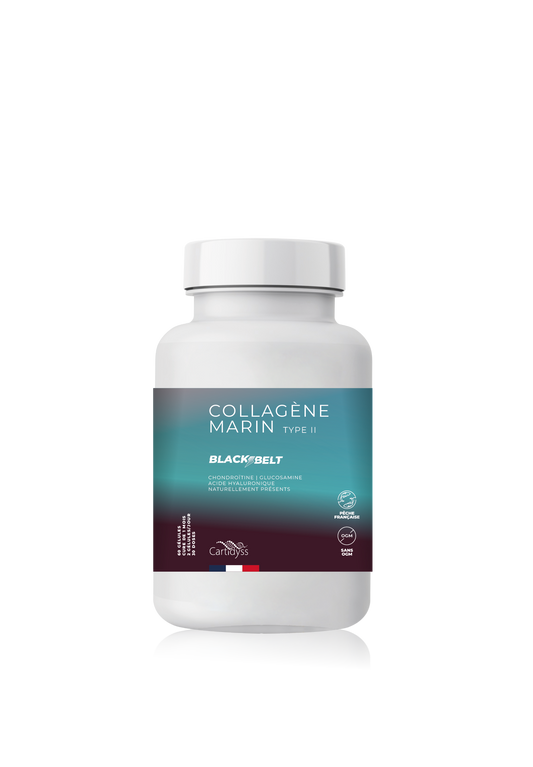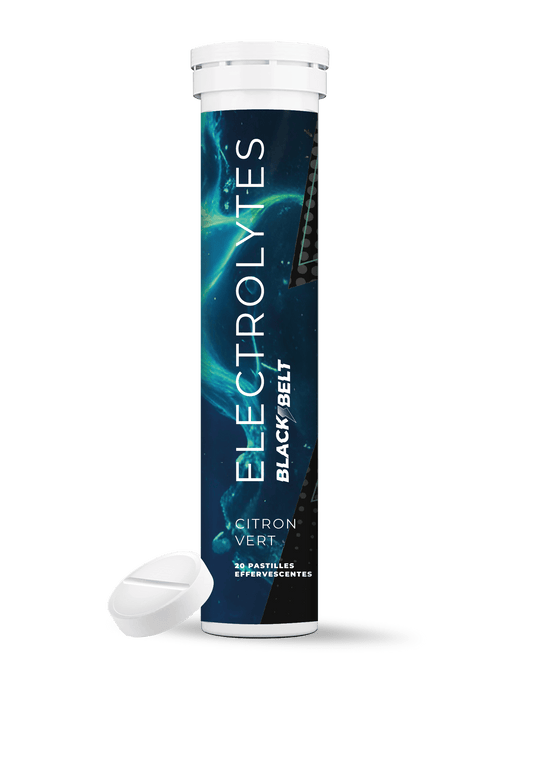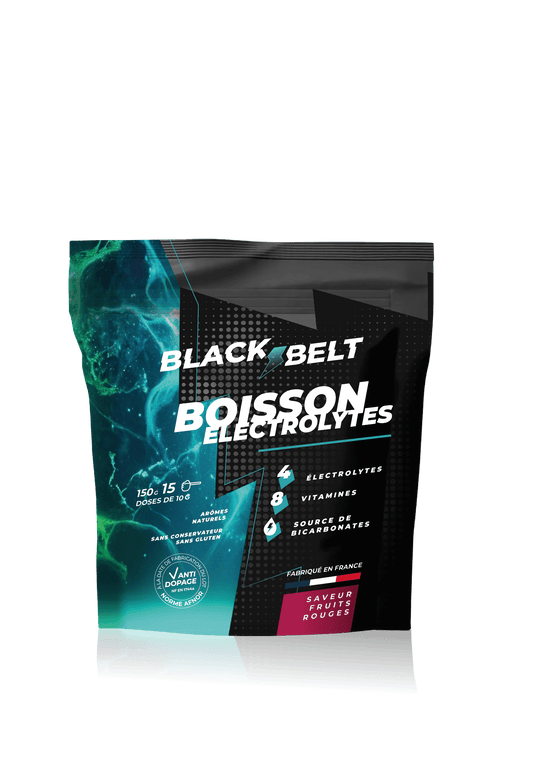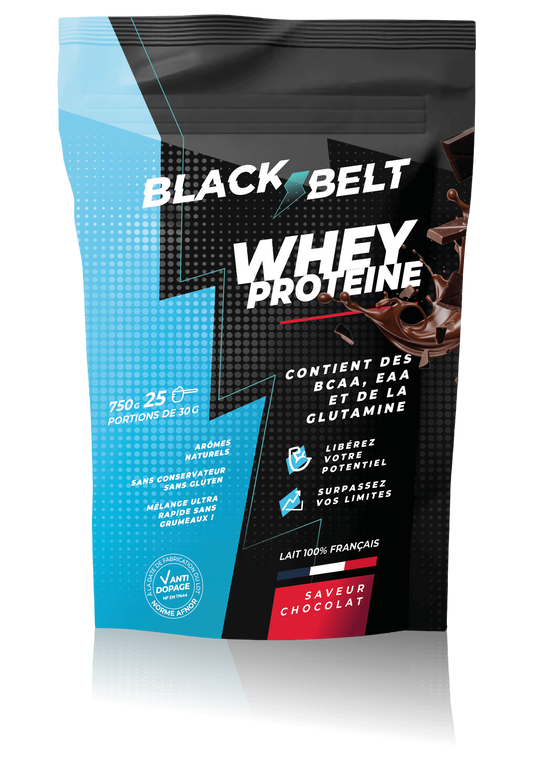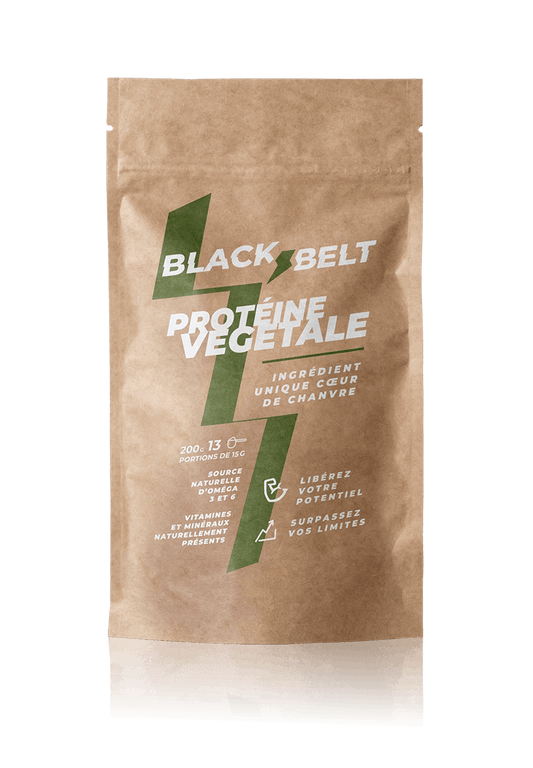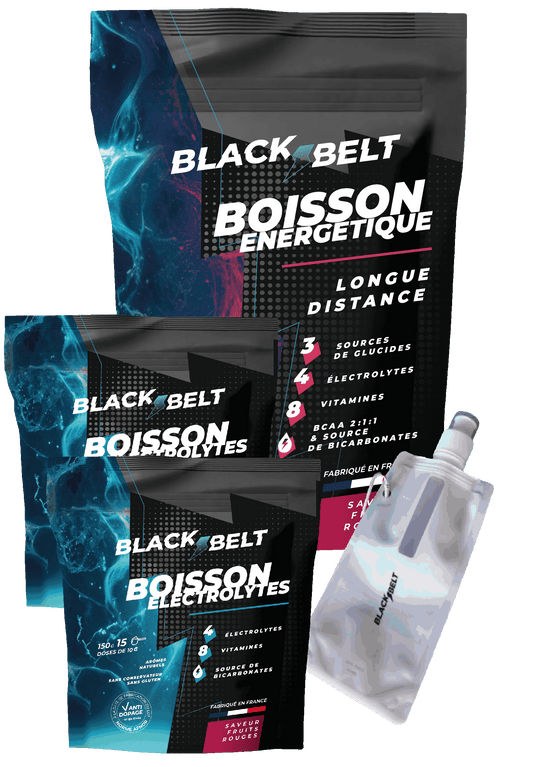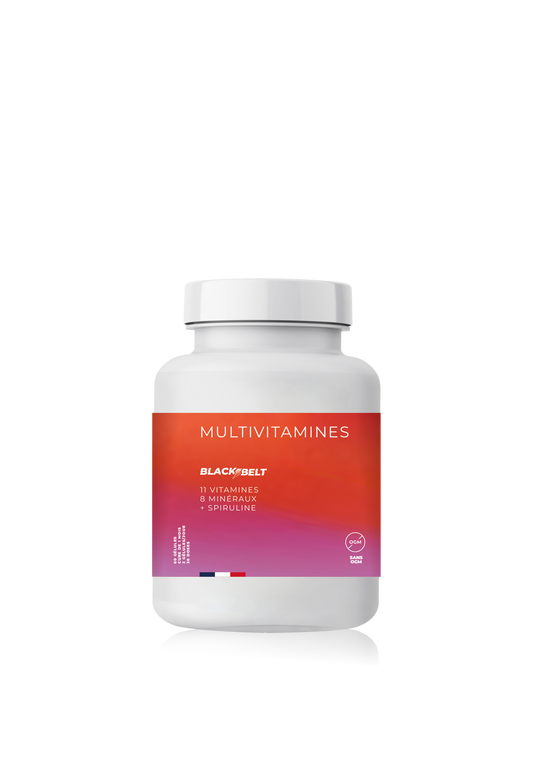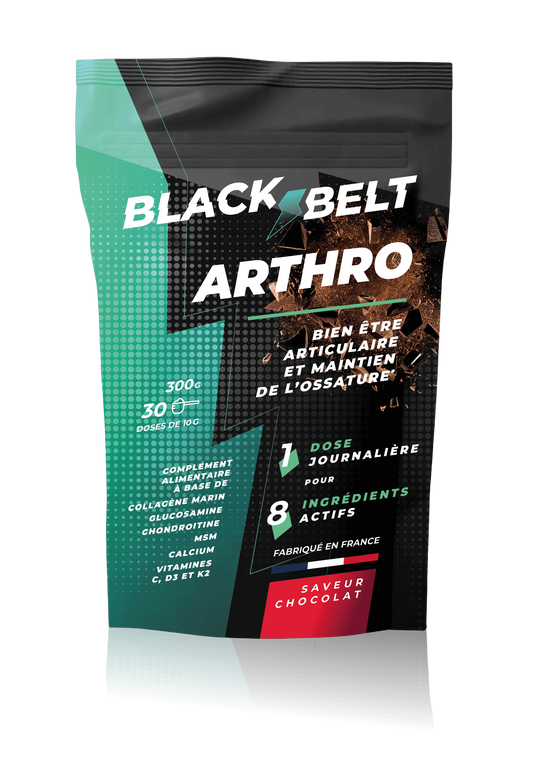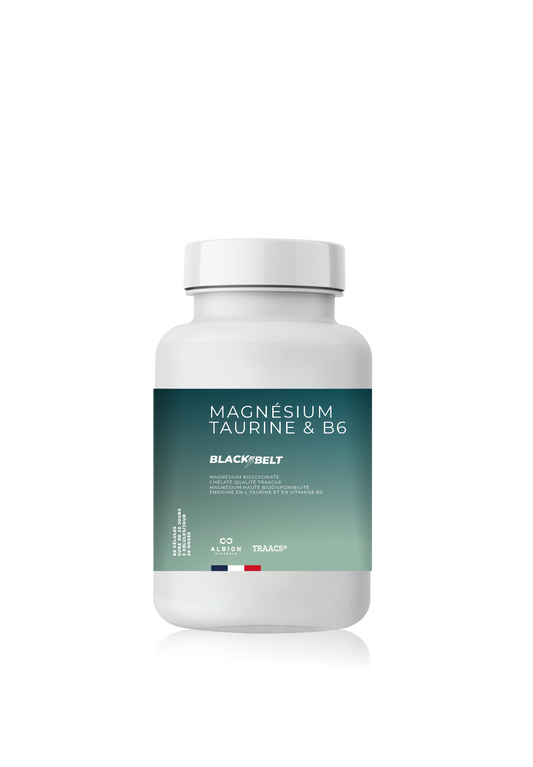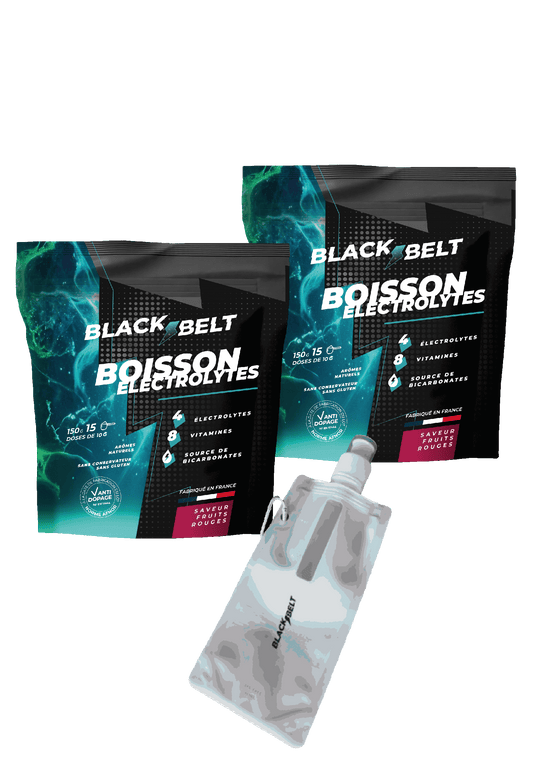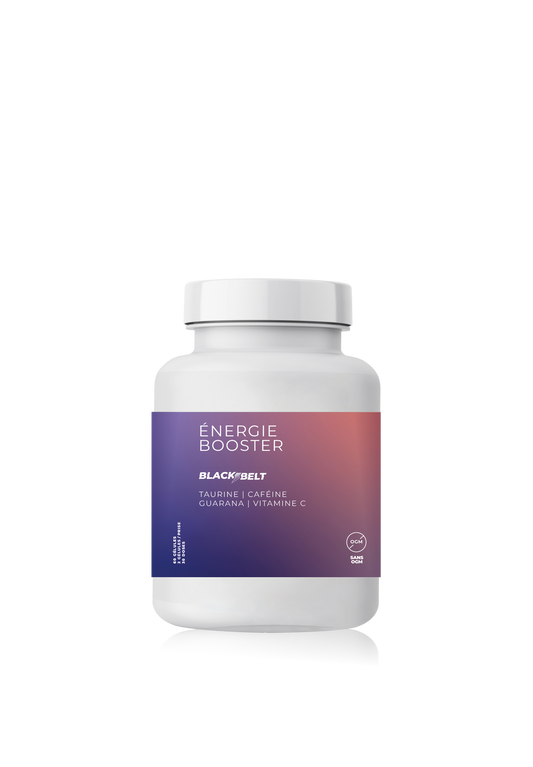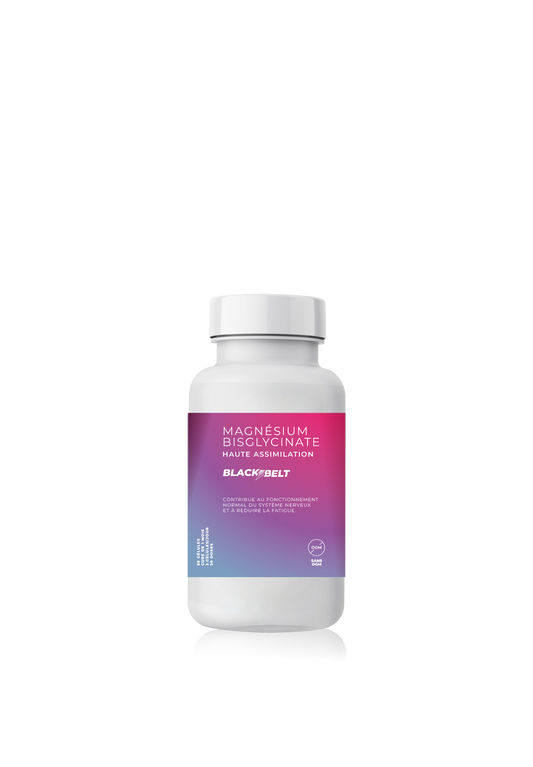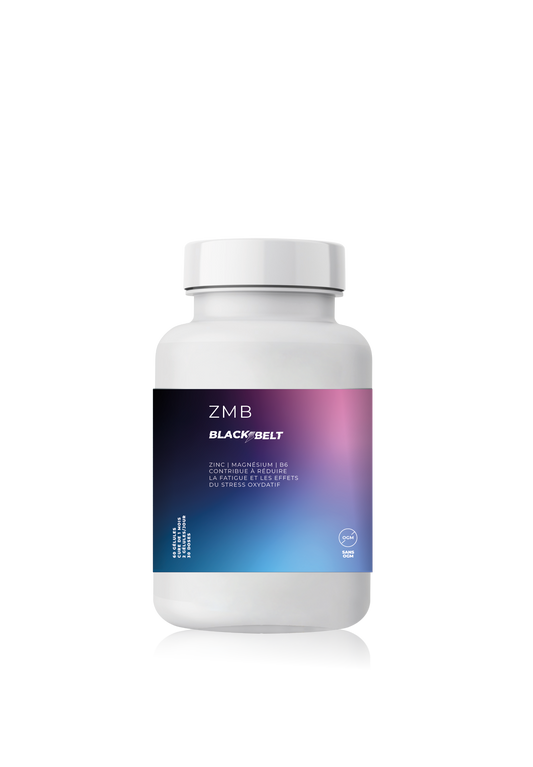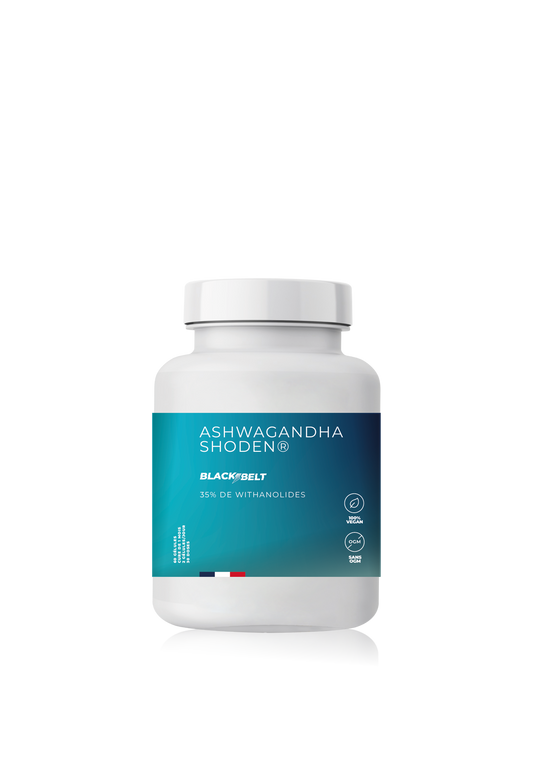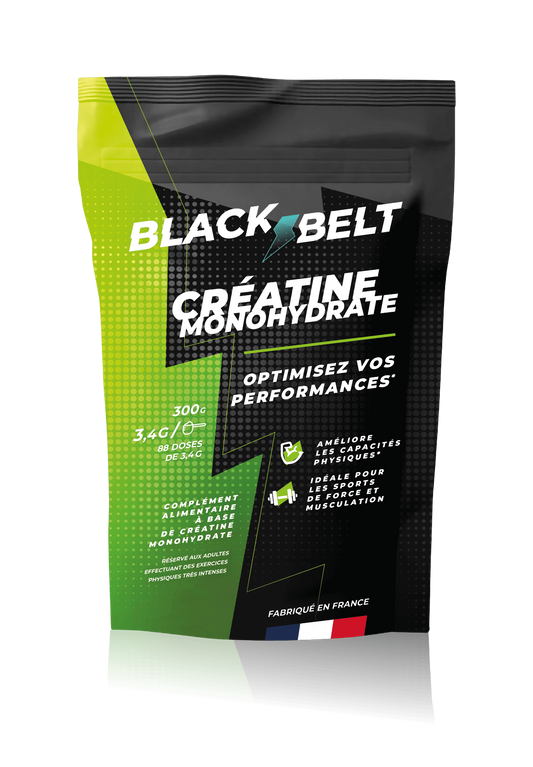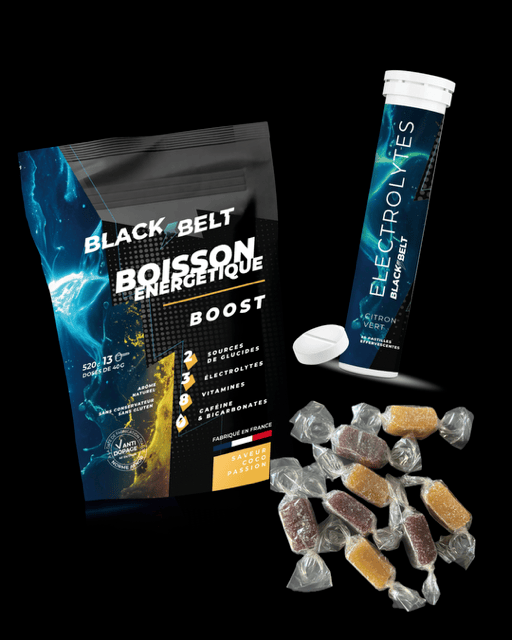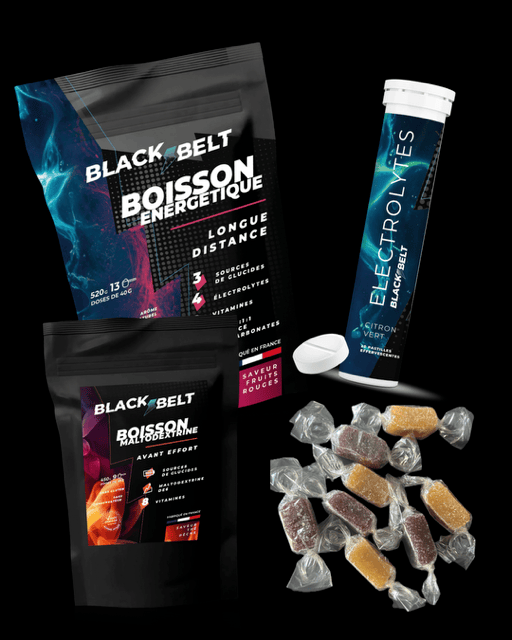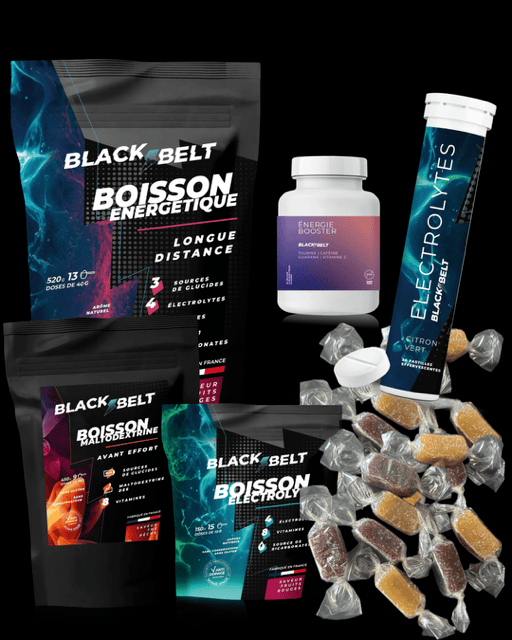
Share
Hydration and Fueling Strategies for Trail Runners
Trail running is a demanding discipline that puts intense demands on the body on varied and often uneven terrain. To optimize performance and ensure effective recovery, a proper nutritional and hydration strategy is essential. This article details the best nutrition and hydration practices for trail runners.
Understanding the energy needs of the trail runner
Trail races can vary in duration, from a few hours to several days for ultra-trails. This variability requires precise adaptation of energy intake to meet the specific demands of each race.
one. Carbohydrates: the main fuel
Carbohydrates are the preferred energy source during endurance efforts. They should represent a significant portion of a runner's calorie intake.
• Before the race: Gradually increase carbohydrate consumption in the days leading up to the event to maximize glycogen stores.
• During the race: Consume carbohydrates in the form of gels, energy drinks or easily digestible solid foods, at a rate of 30 to 60 grams per hour depending on the intensity of the effort.
b. Proteins: support for recovery
Although protein is not the primary source of energy during exercise, it plays a crucial role in post-workout muscle recovery. Therefore, it is recommended to ensure adequate protein intake during pre- and post-workout meals.
c. Lipids: sustainable energy
Fats provide a long-term source of energy, particularly useful during long runs. However, because they are digested more slowly, it is advisable to consume them in moderation before the race and avoid high-fat foods during exercise.

2. Effective hydration strategies
Adequate hydration is essential to maintain performance and prevent health problems related to dehydration.
a. Before the race
Ensure optimal hydration in the days leading up to the race by regularly drinking water and electrolyte drinks. On race day, consume approximately 500 ml of water within two hours of the start.
b. During the race
It is recommended to drink between 400 and 800 ml of water per hour of exercise, depending on the intensity of the session and weather conditions. Alternating between water and isotonic drinks can help maintain electrolyte balance and provide additional carbohydrates.
c. After the race
Replenish fluid stores by drinking water and electrolyte-rich beverages. It's also beneficial to eat water-rich foods, such as fruits, to aid rehydration.
3. Nutritional planning according to the duration of the race
The nutritional approach must be adapted according to the duration and intensity of the course.
a. Course of less than 4 hours
Favor carbohydrate intake in liquid or semi-liquid form, such as gels or energy drinks, to facilitate digestion and rapid absorption.
b. Courses of 4 to 8 hours
Combine solid and liquid foods to vary energy sources and prevent taste monotony. For example, consume energy bars every 45 minutes and purees or gels every 30 minutes.
c. Courses lasting more than 8 hours (ultra-trails)
Establish a detailed nutritional strategy that includes larger meals at refreshment points, while continuing to consume fast-acting carbohydrates regularly between these points. It is essential to test these strategies during training to ensure tolerance.
4. Practical advice for successful trail nutrition
• Training Tester: Never introduce new foods or drinks on race day. Always test products during training sessions to avoid unpleasant surprises.
• Adapt according to conditions: Modify water and energy intake according to weather conditions and the profile of the race.
• Listen to your body: Stay attentive to signals of hunger, thirst or discomfort and adjust your strategy accordingly.

In conclusion
A well-planned hydration and nutrition strategy is essential for any trail runner looking to optimize performance and ensure effective recovery. It's crucial to tailor this strategy to individual needs, course duration, and specific conditions, while ensuring you test and adjust these plans during training.










